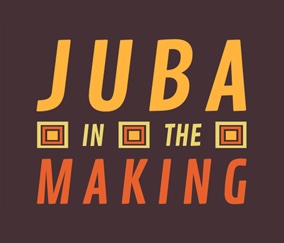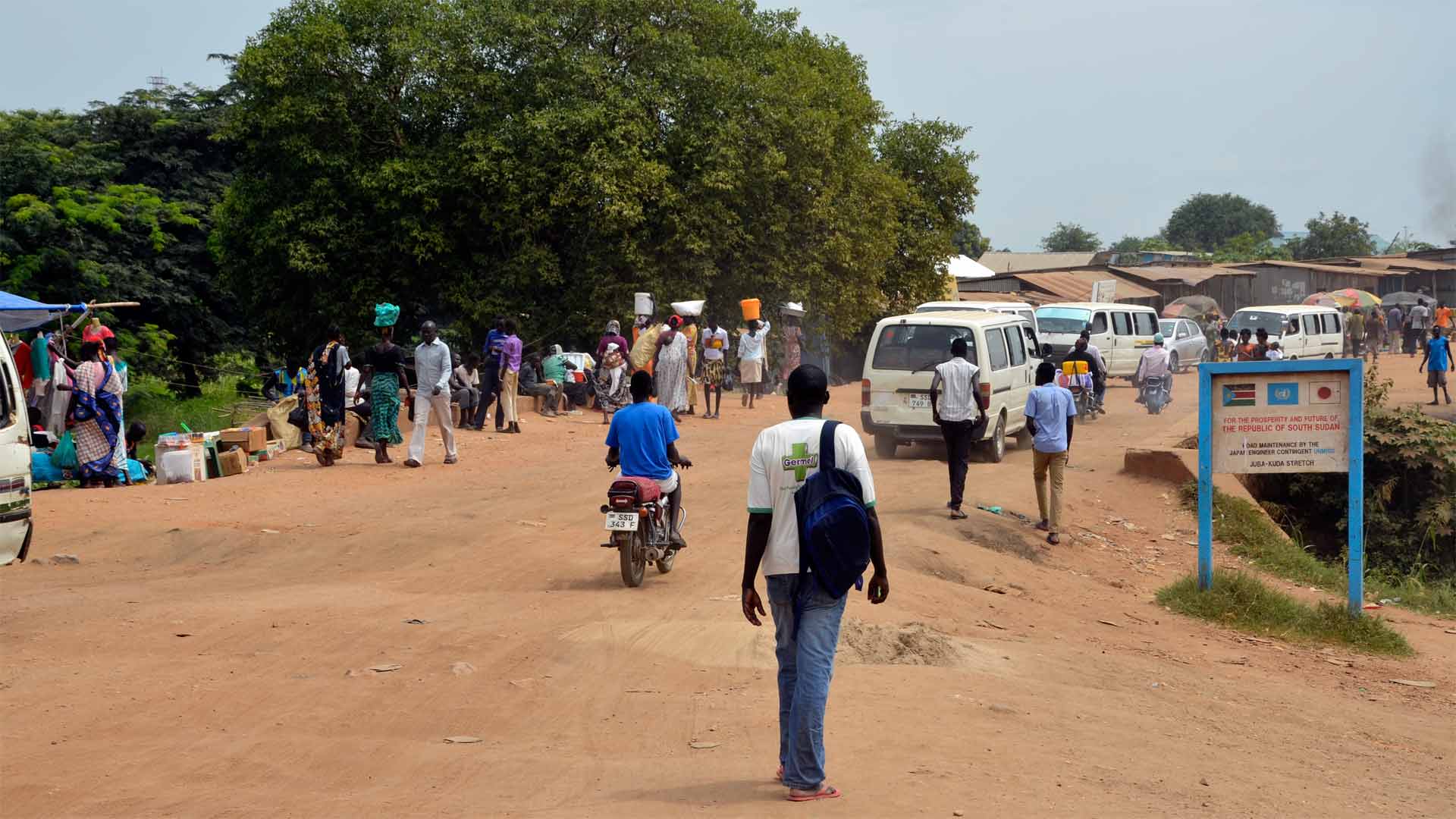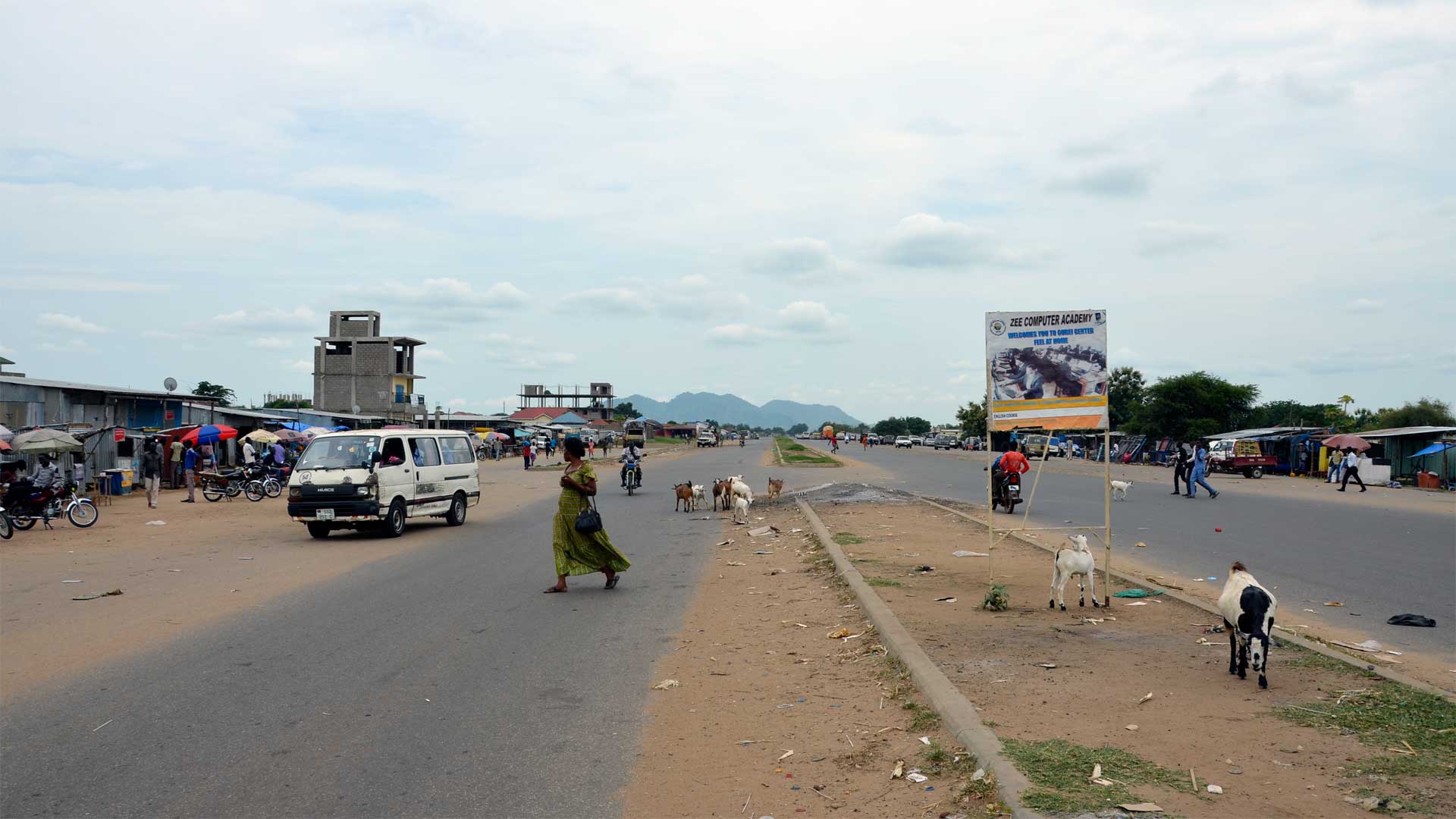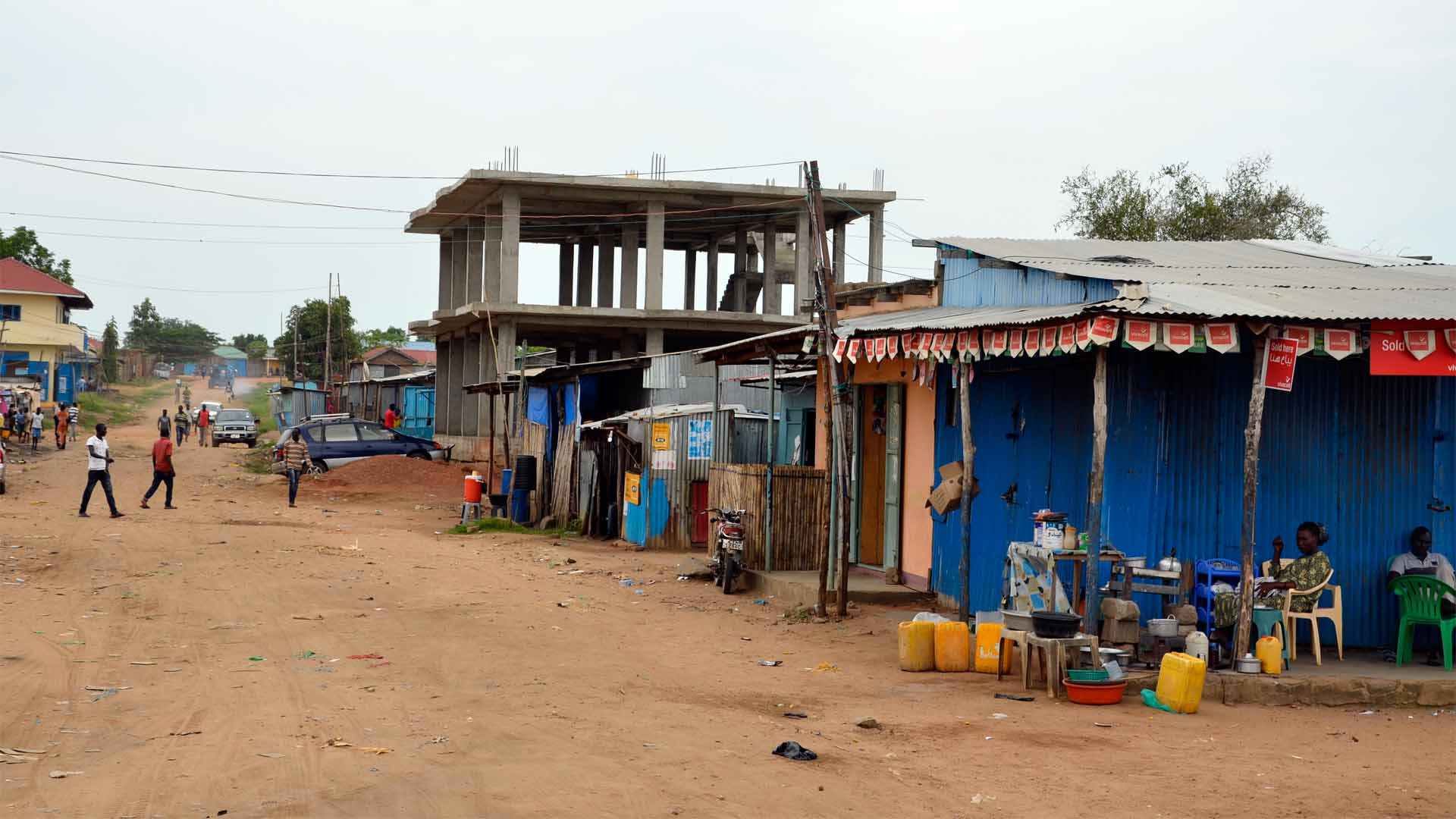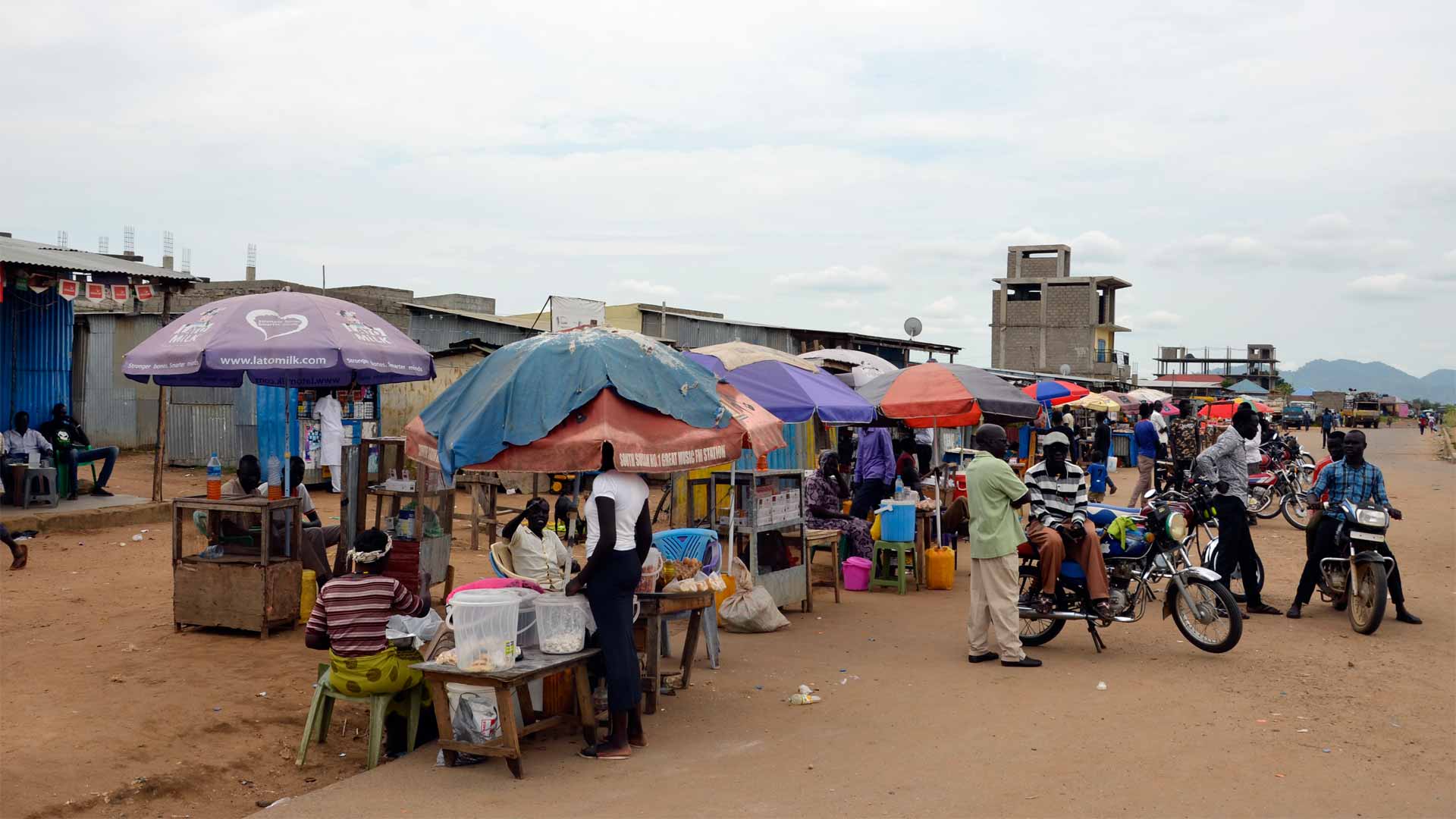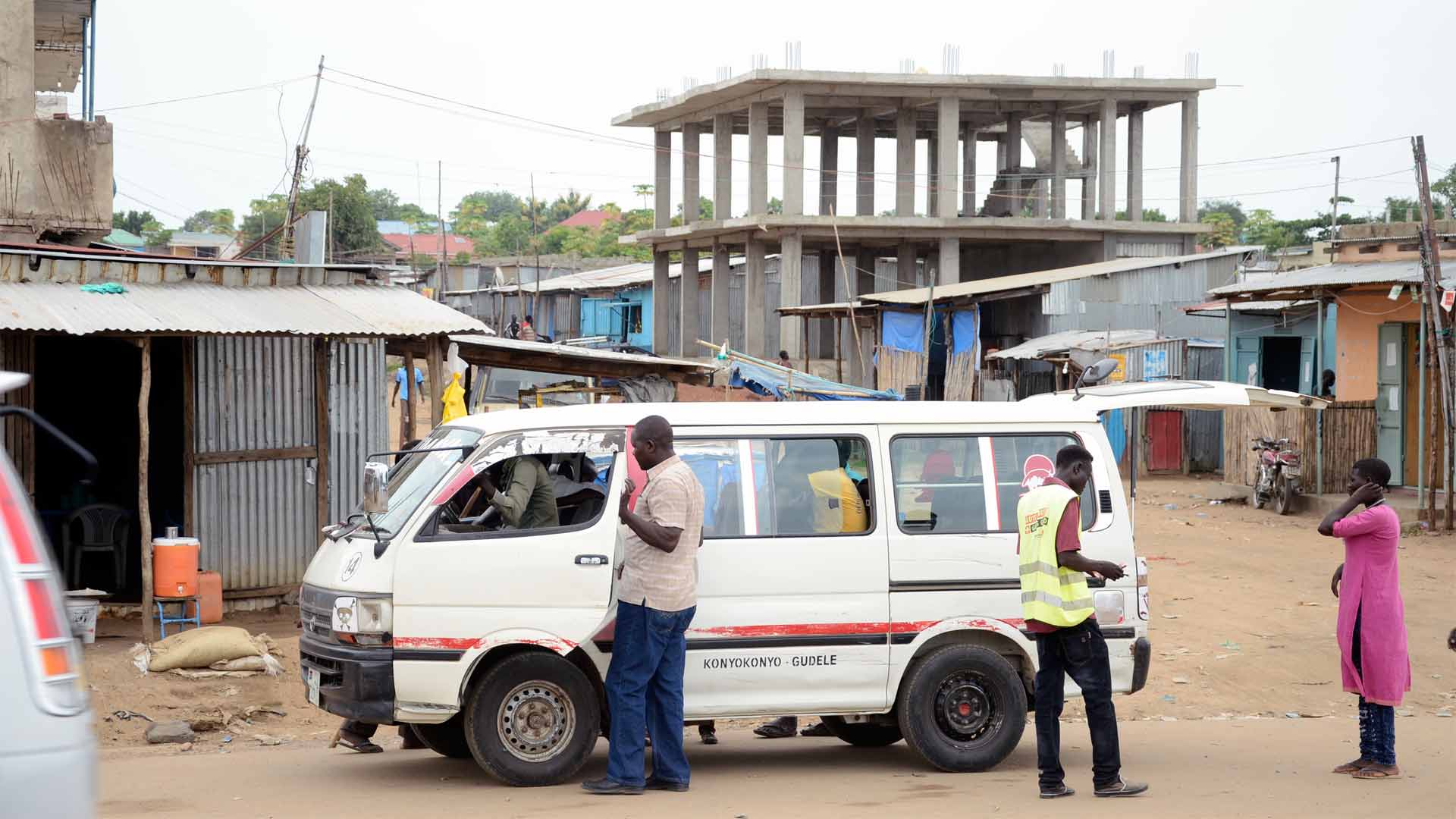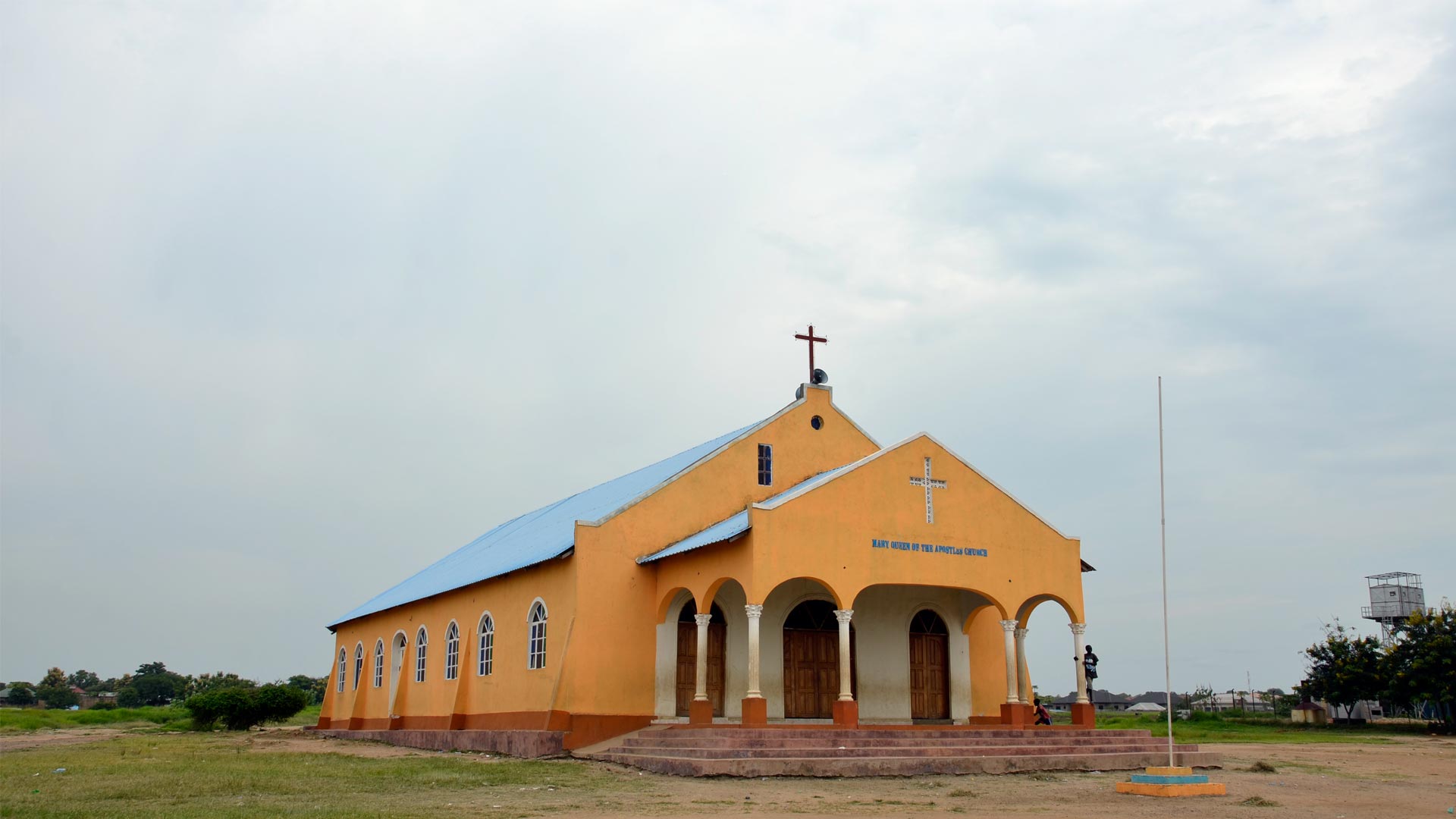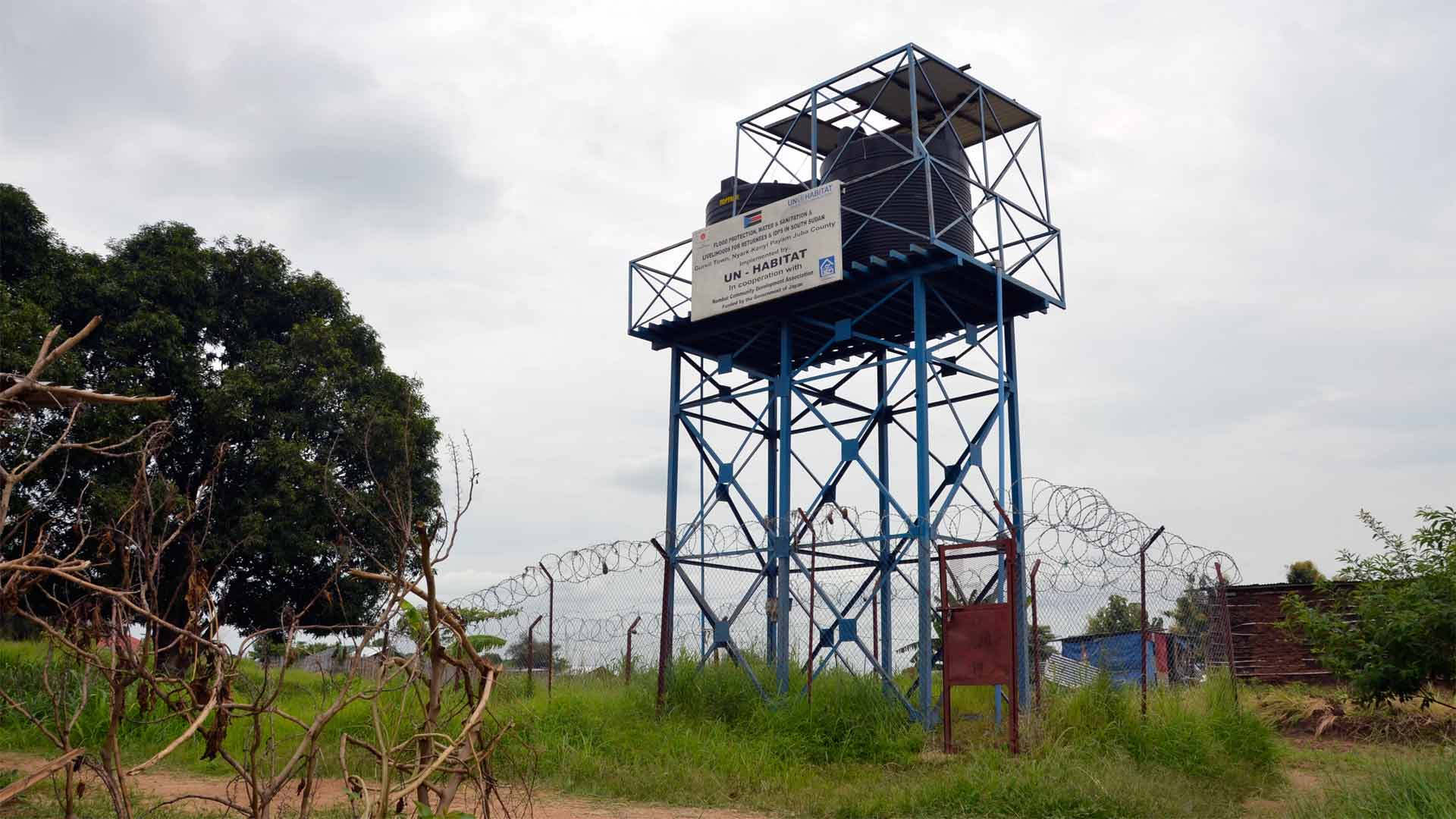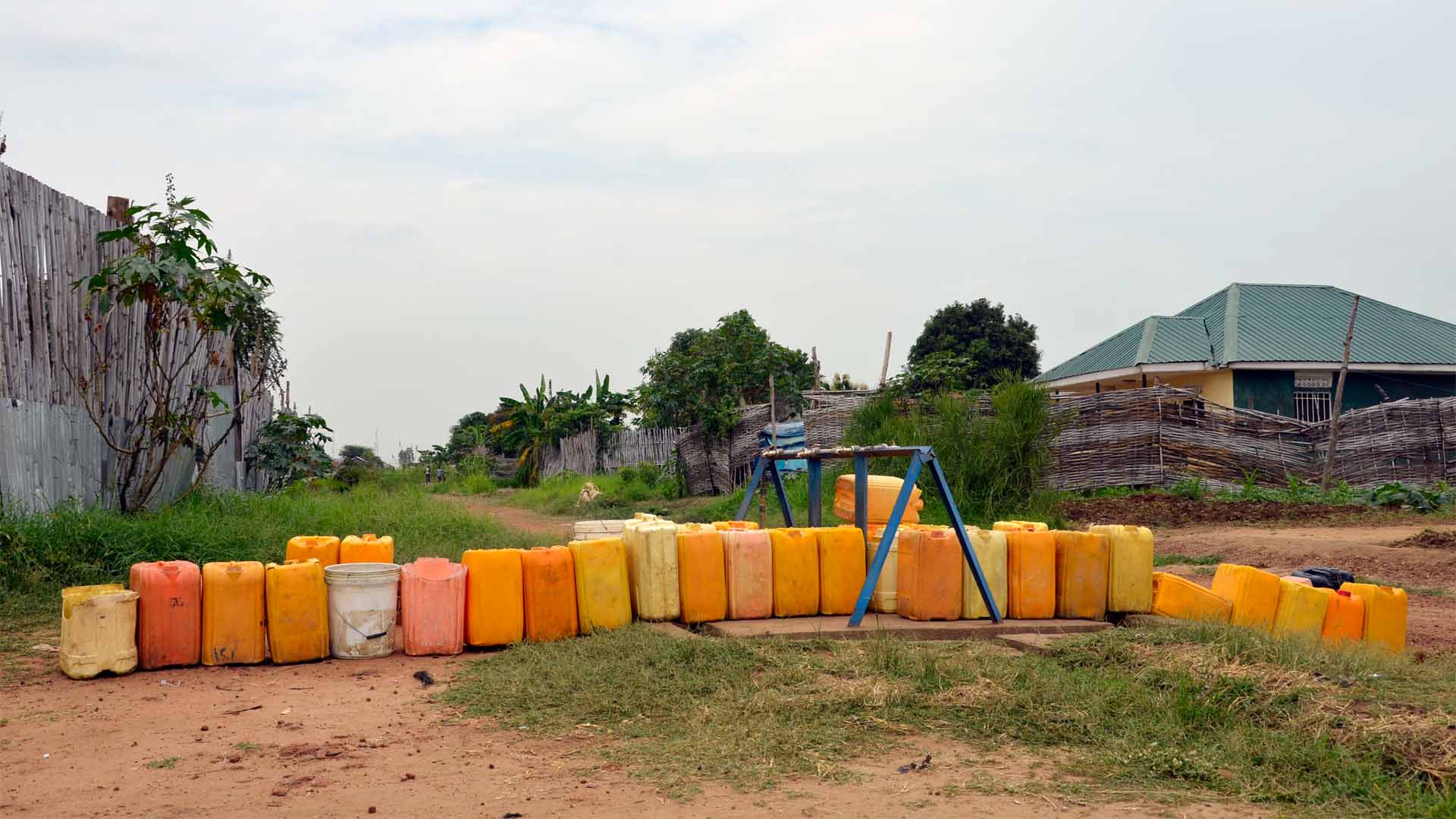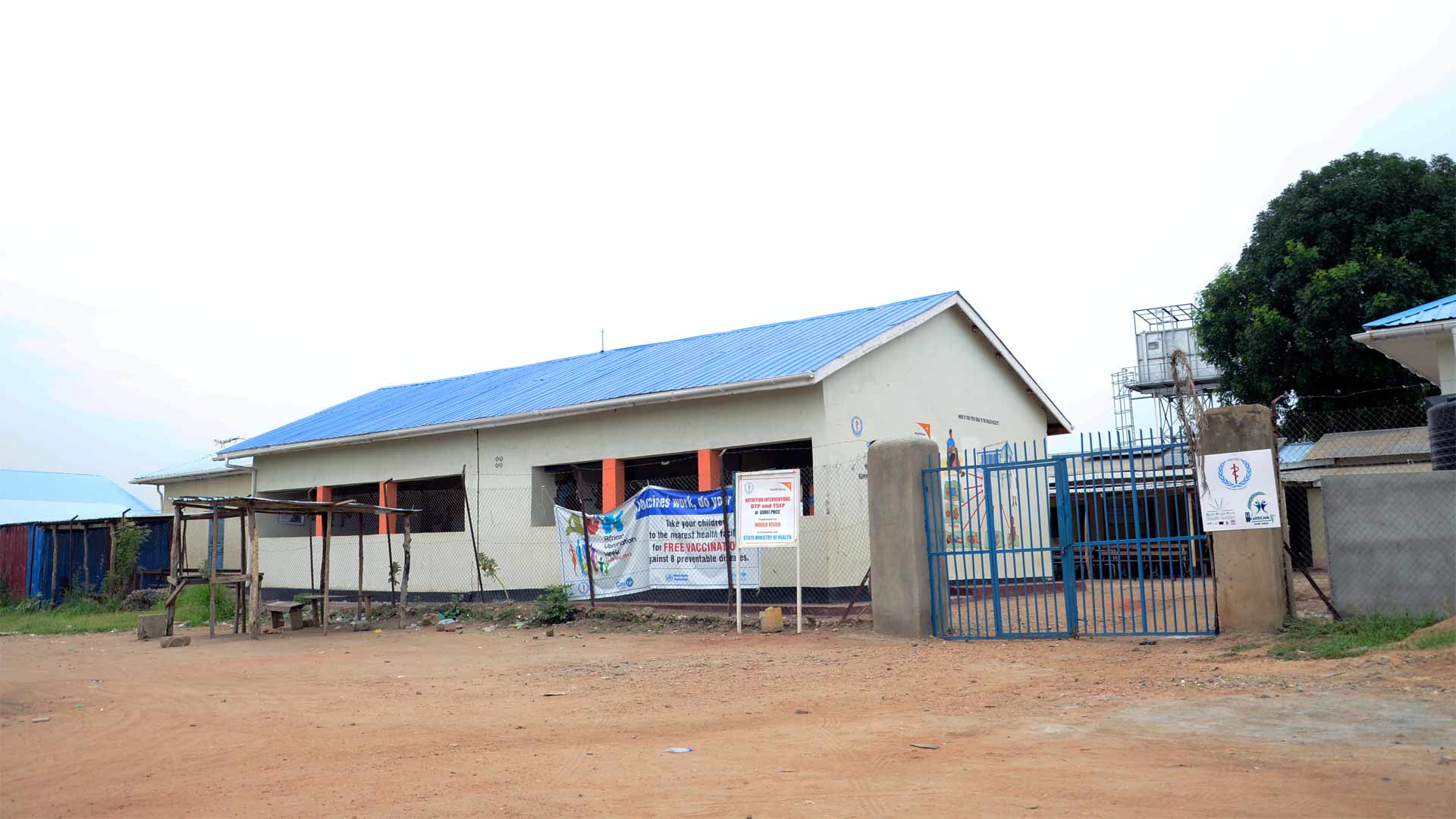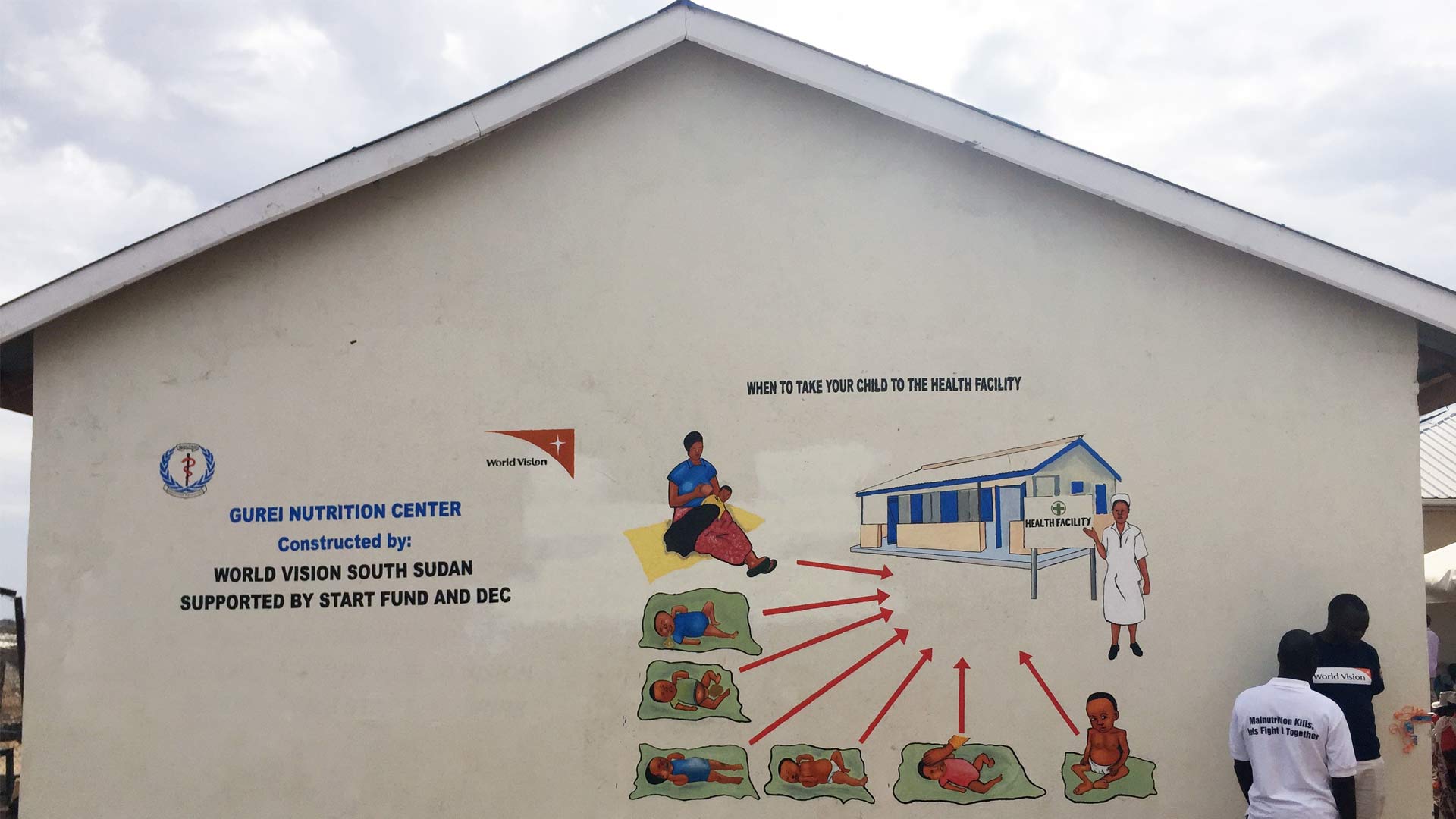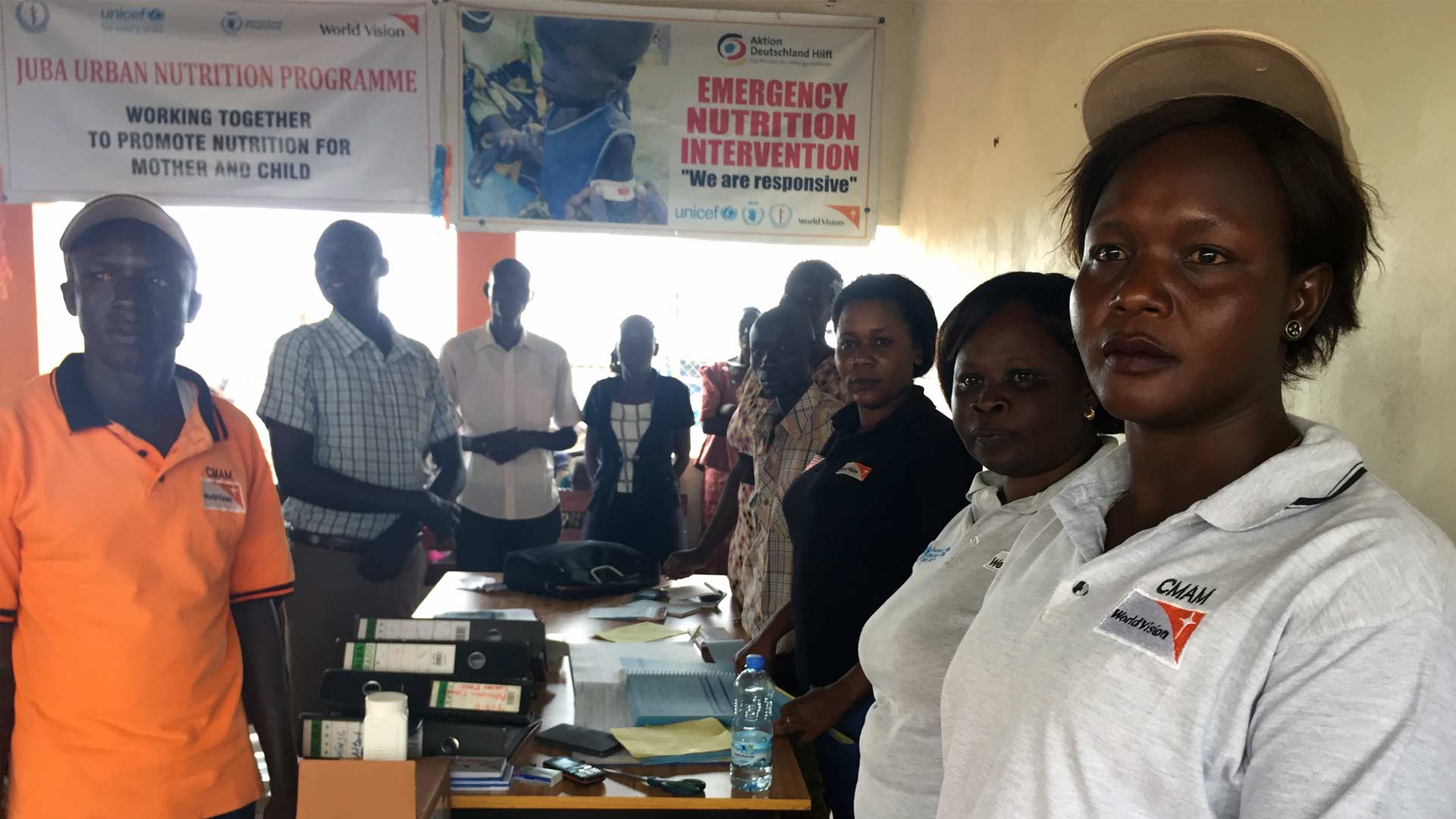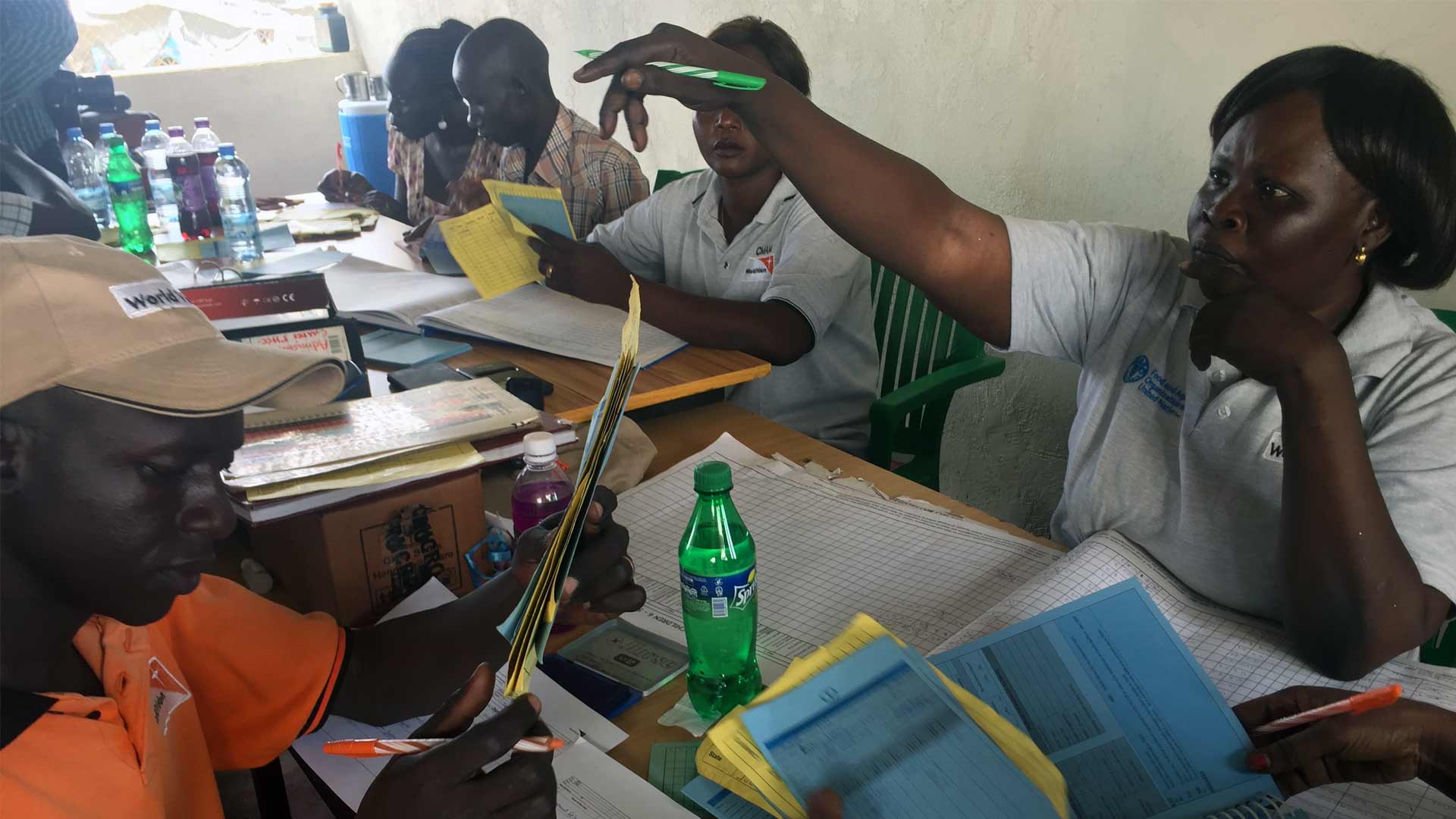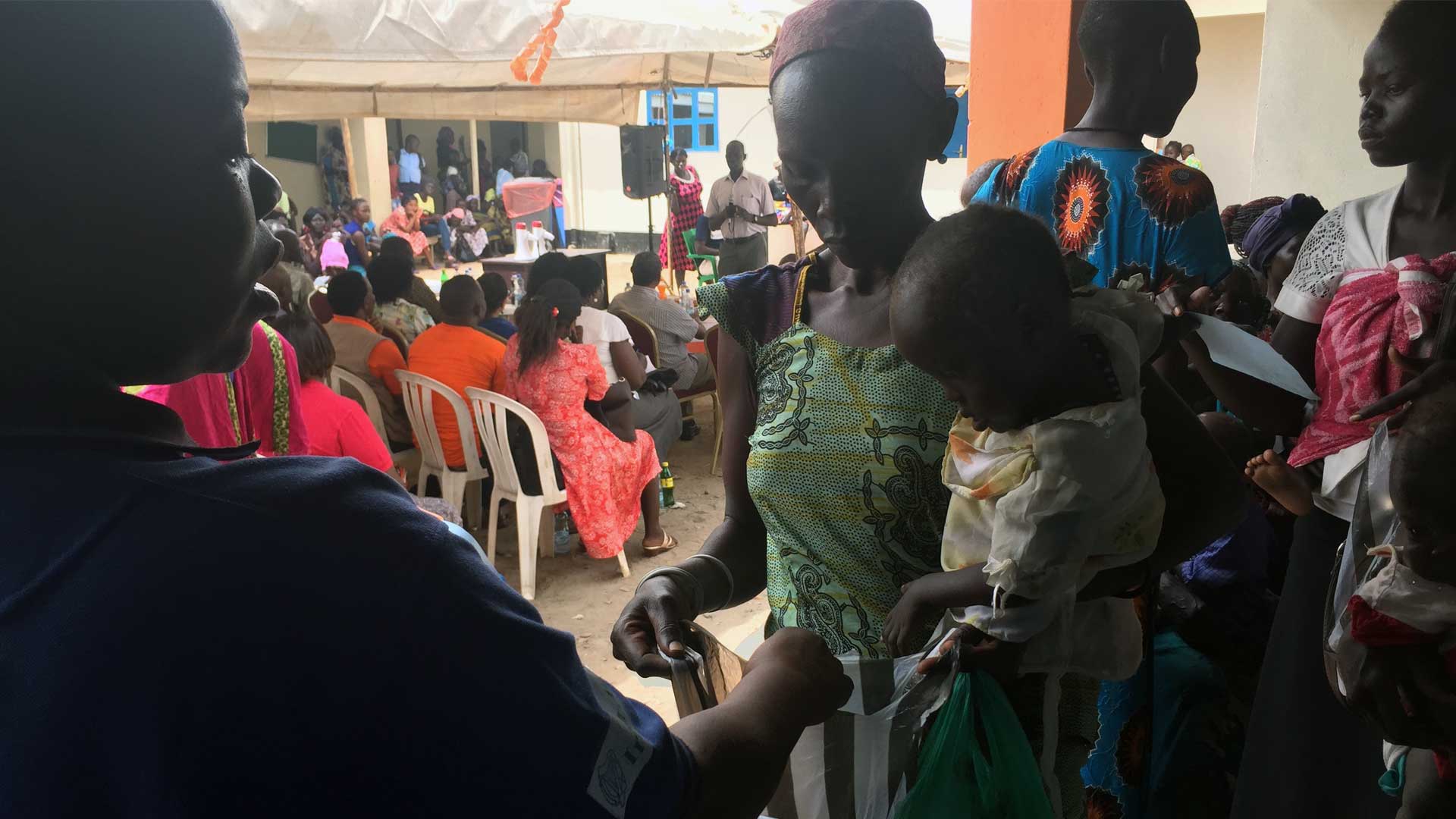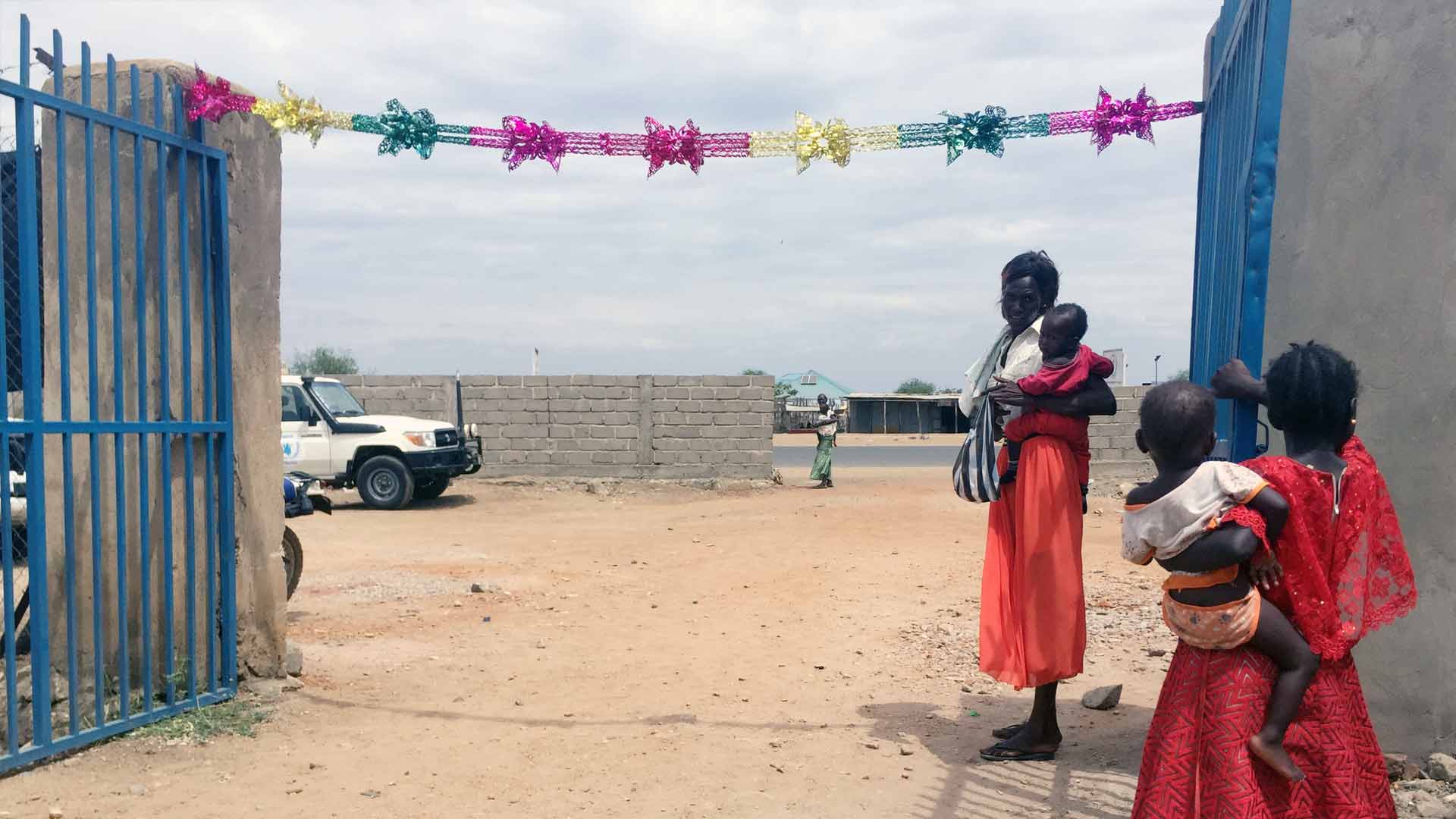Gurei
Mary Queen of the Apostols, a Catholic Church, is a landmark in Gurei, one of Juba’s non-central, recent neighbourhoods.
To reach Gurei, you must head west from the Seven Days roundabout for about 15km – you will pass through some of the most recent neighbourhoods of Juba city, where new residents and returnees settled from 2005 onwards. Gudele 1 and 2 grew between 2005-2011, the year where South Sudan’s independence was declared. After Gudele 2, you reach Kobri Haboba (“Grandma’s Bridge” in Arabic), an area which was largely inhabited prior to 2011. According to Juba elders, it was named after the first woman who settled there. Right across Kobri Haboba, you’ve arrived in Gurei. “Gurei” is the name of a grey bird in Bari.
Life is not easy in Gurei. To go to downtown Juba using public transportation means, you need no less than three hours to go and come back. If you can’t go shopping for food in the centre of town, you must turn to the few roadside stalls offering vegetables at inflated prices. We’re 25 km away from the Nile, and even farther from the market of Konyo Konyo. Everything gets more expensive when it reaches Gurei. Water delivery trucks drive all the way from the pumping stations set by the riverside, and incorporate the extra fuel they use into the price of each drum of water. Communal water tanks were put in place with the support international organisations to try and ease the access to water.
Like other neighbourhoods, Gurei has been plagued by unemployment, poverty and the lack of food. At the Gurei Primary Health Care centre, the Ministry of Health together with humanitarian organisations treat mothers and children for malnutrition.


